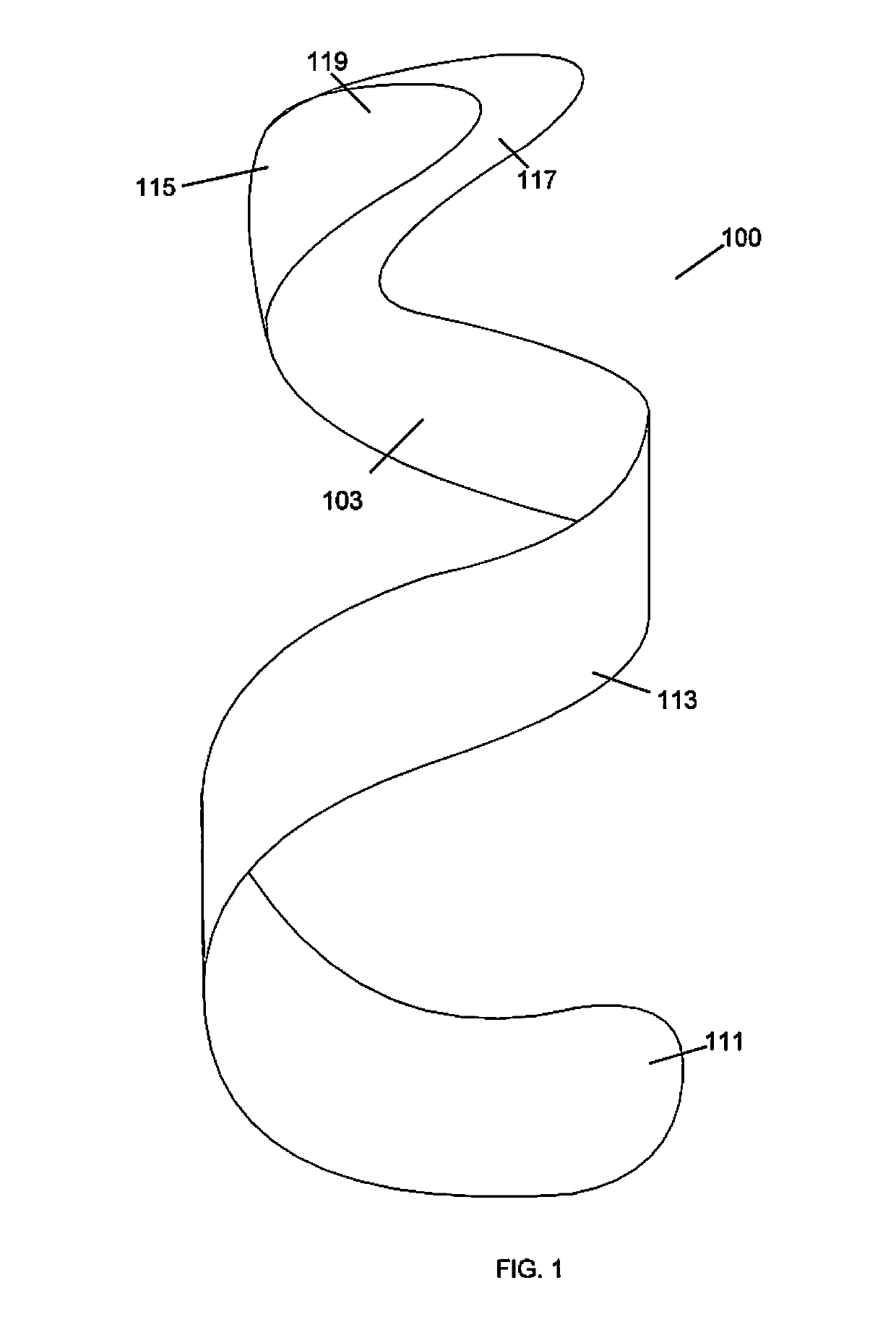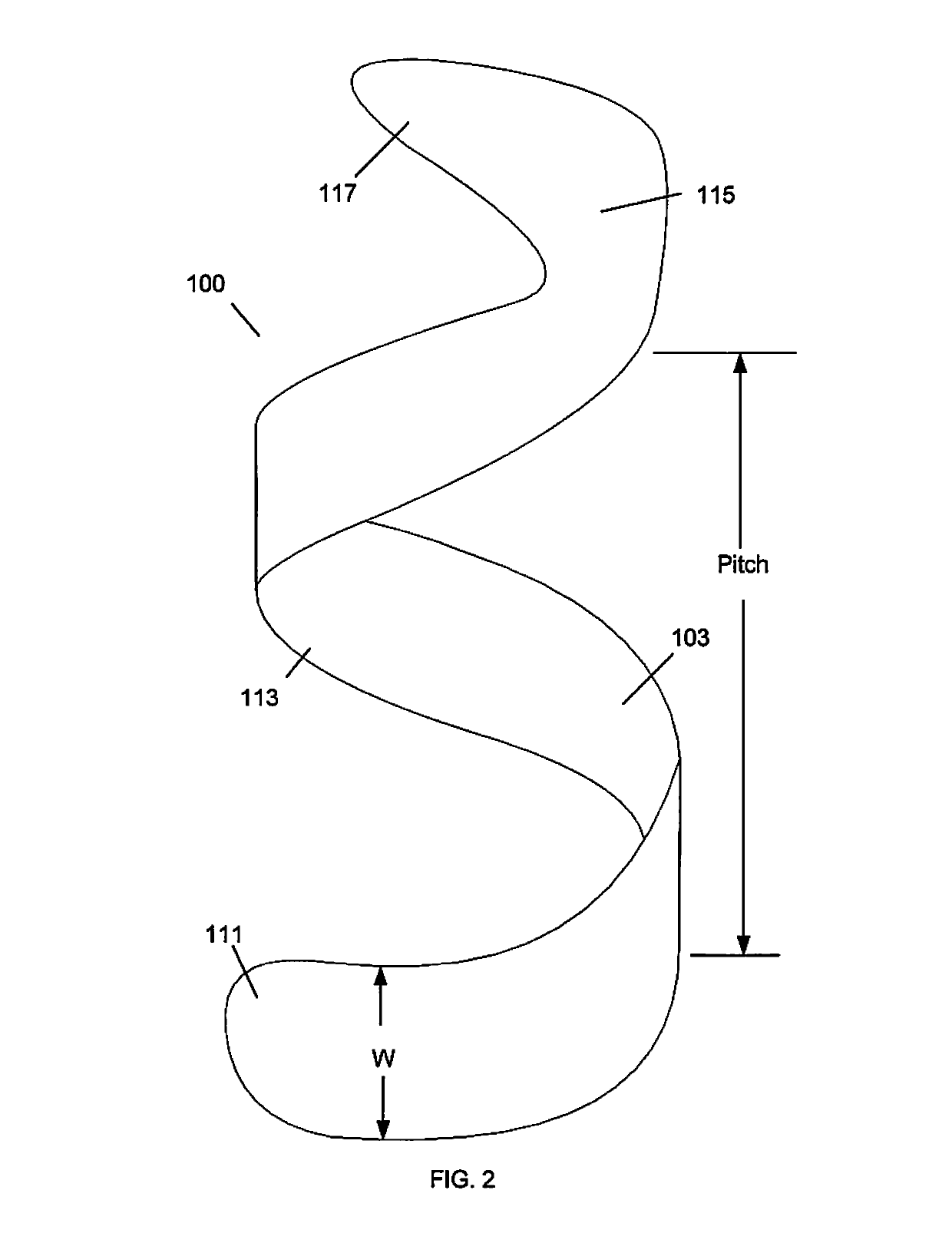Spiral brace
a brace and spine technology, applied in the field of braces, can solve the problems of unattractive appearance, uncomfortable wear, and complicated positioning to secure to the patient's body, and achieve the effects of less material for fabrication, more accurate position measurements, and simplified brace design and construction
- Summary
- Abstract
- Description
- Claims
- Application Information
AI Technical Summary
Benefits of technology
Problems solved by technology
Method used
Image
Examples
Embodiment Construction
[0023]The present invention is a custom designed spiral brace. The term “spiral” is used to describe the three dimensional curve of a brace that wraps at least one full circumferential turn around an axis of the limb in a generally helical shape. The spiral brace can also have interior surfaces that correspond closely to a digital representation of a portion of a patient's body which can be from an optical scan or photograph(s) of the patient. When a patient injures a limb, the spiral brace can be designed to closely fit around the limb. In order to provide a close fit around the limb, the interior surfaces can be slightly larger than the digital representation of the portion of the patient's body. Thus, the interior surfaces are not an exact match but correspond to the digital representation of the patient's body. The inventive spiral brace can be designed to resist specific types of movement. For example, a spiral brace can be an arm brace that allows movement of the fingers and t...
PUM
 Login to View More
Login to View More Abstract
Description
Claims
Application Information
 Login to View More
Login to View More - R&D
- Intellectual Property
- Life Sciences
- Materials
- Tech Scout
- Unparalleled Data Quality
- Higher Quality Content
- 60% Fewer Hallucinations
Browse by: Latest US Patents, China's latest patents, Technical Efficacy Thesaurus, Application Domain, Technology Topic, Popular Technical Reports.
© 2025 PatSnap. All rights reserved.Legal|Privacy policy|Modern Slavery Act Transparency Statement|Sitemap|About US| Contact US: help@patsnap.com



